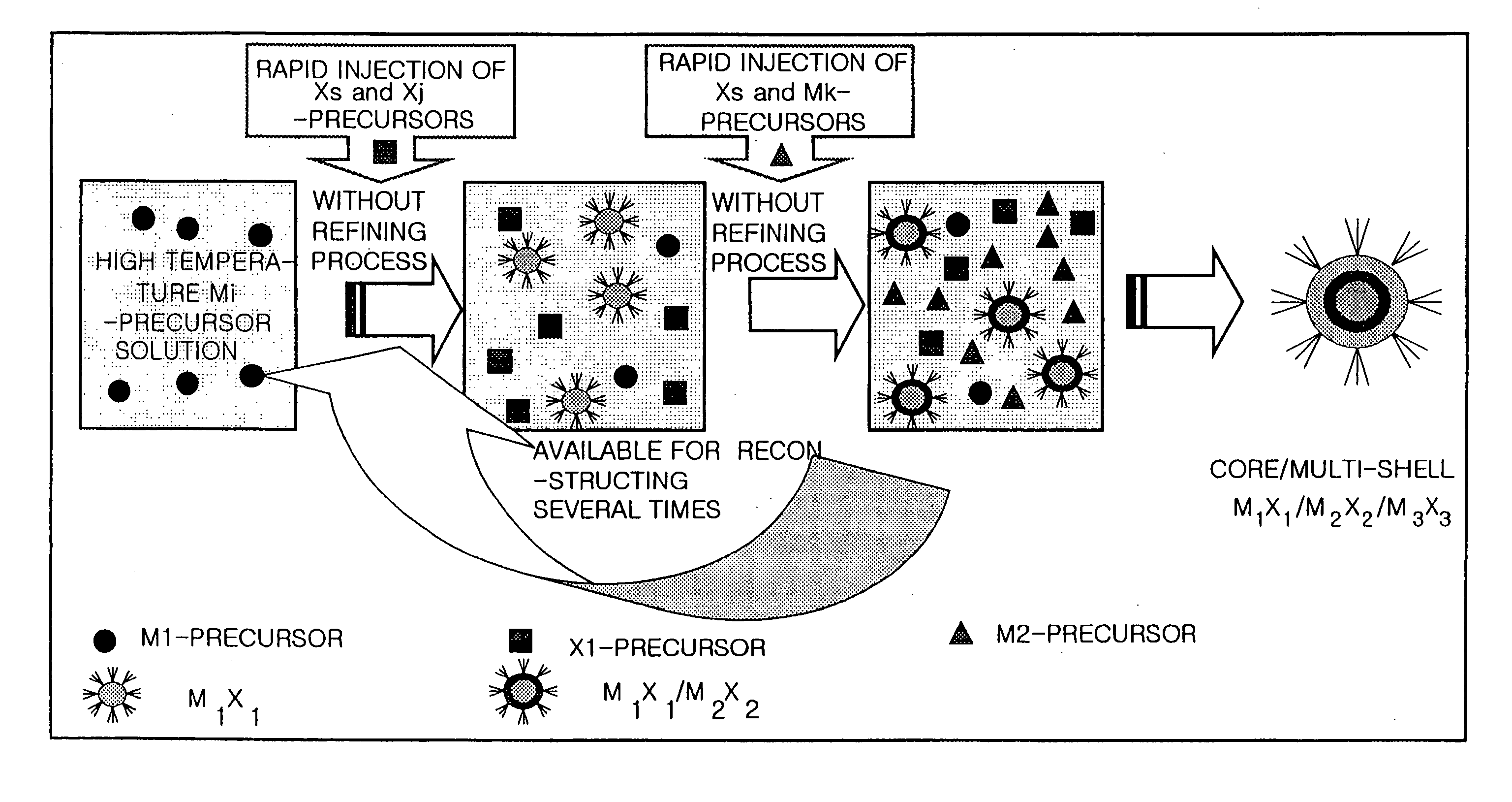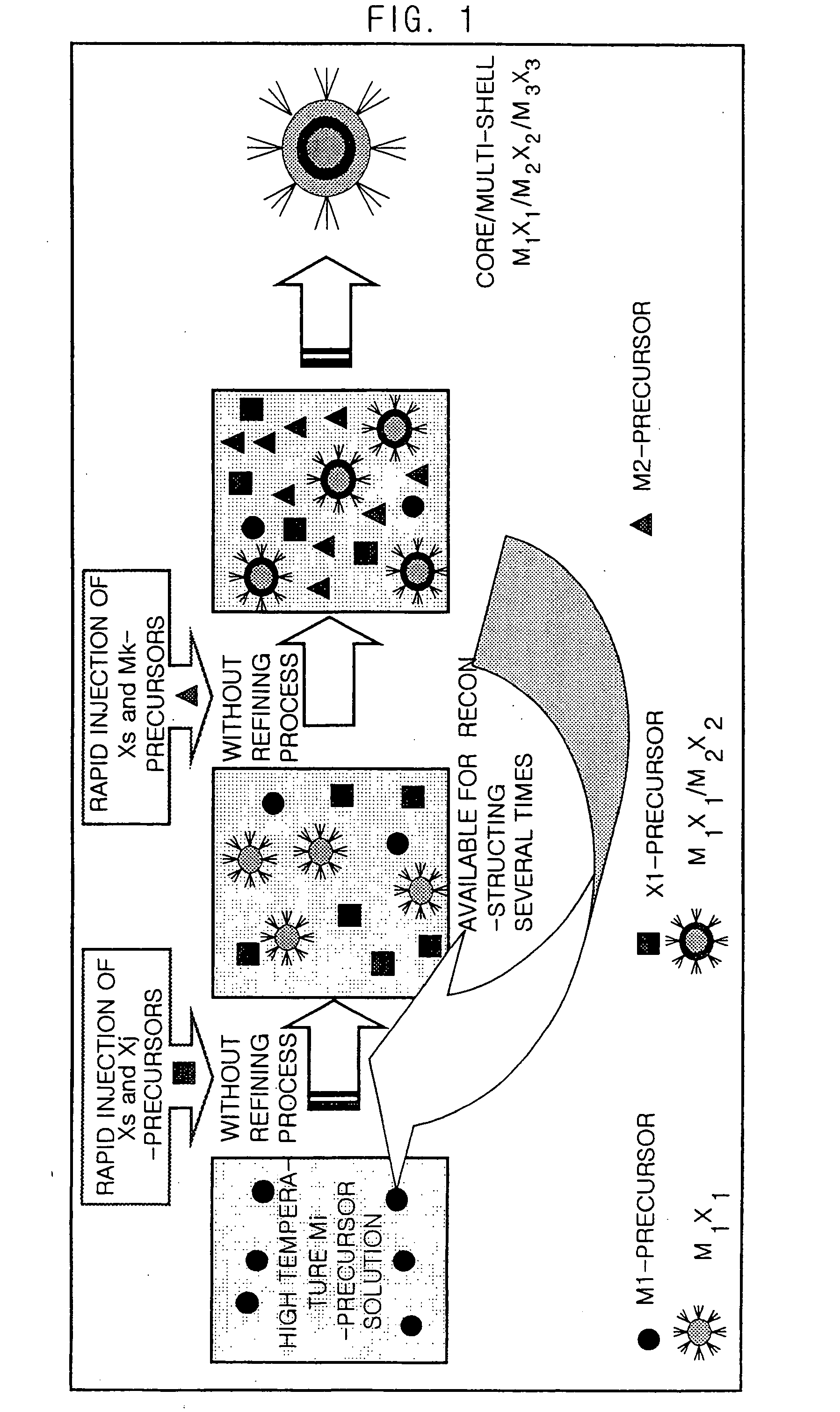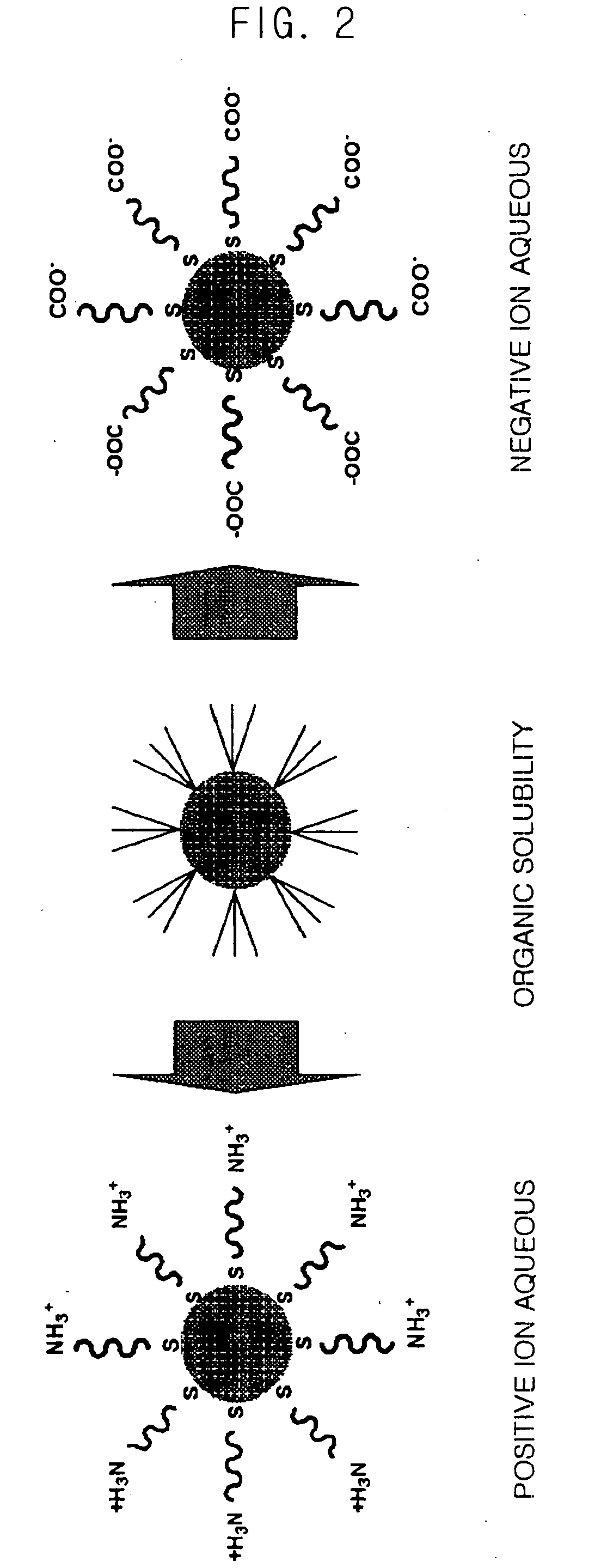Method for Synthesizing Semiconductor Quantom Dots
a quantum dots and semiconductor technology, applied in the field of systhesizing semiconductor quantum dots, can solve the problems of many human power, high cost, and large quantity of quantum dots, and achieve excellent photochemistry stability, high luminous efficiency, and rapid time in a large quantity
- Summary
- Abstract
- Description
- Claims
- Application Information
AI Technical Summary
Benefits of technology
Problems solved by technology
Method used
Image
Examples
first embodiment
Manufacturing 1 of CdSe Core Quantum Dots
[0060] The cadmium oxide (CdO) of 51.4 mg (0.4 mmol) and the stearic acid of 230 mg (0.8 mmol) are added into a 50 mL round bottom flask and melted at a temperature of 300° C. If a transparent solution is formed, a temperature of the reaction vessel is cooled down to the room temperature. In this reaction vessel, tri-n-octylphosphine oxide (TOPO) of 2 g and hexa-decylamine (HDA) of 2 g are added and the temperature of the reaction vessel is raised to 300° C. Herein, 0.4M tri-n-octylphosphine selenides(TOPSe) of 5 mL is rapidly injected into the reaction vessel. After the CdSe is grown during a predetermined time, the temperature of the reaction vessel is cooled down to the room temperature.
second embodiment
Manufacturing 2 of CdSe Core Quantum Dots
[0061] The cadmium carbonate(CdCO3) of 68.9 mg (0.4 mmol) and the stearic acid of 230 mg (0.8 mmol) are added into a 50 mL round bottom flask and melted at a temperature of 300° C. If a transparent solution is formed, a temperature of the reaction vessel is cooled down to the room temperature. In this reaction vessel, TOPO of 2 g and HDA of 2 g are added and the temperature of the reaction vessel is raised to 300° C. Herein, 0.4M tri-n-butylphosphine selenides(TBPSe) of 5 mL is rapidly injected into the reaction vessel. After the CdSe is grown during a predetermined time, the temperature of the reaction vessel is cooled down to the room temperature.
third embodiment
Manufacturing 3 of CdSe Core Quantum Dots
[0062] The cadmium oxide(CdO) of 51.4 mg (0.4 mmol) and the hexadecylphosphonic acid 130 mg (0.4 mmol) are-added into a 50 mL round bottom flask of 50 mL and melted at a temperature of 300° C. If a transparent solution is formed, a temperature of the reaction vessel is cooled down to the room temperature. In this reaction vessel, TOPO of 2 g and HDA of 2 g are added and the temperature of the reaction vessel is raised to 300° C. Herein, 0.4M tri-n-octylphosphine selenides(TOPSe) of 5 mL is rapidly injected into the reaction vessel. After the CdSe is grown during a predetermined time, the temperature of the reaction vessel is cooled down to the room temperature.
PUM
| Property | Measurement | Unit |
|---|---|---|
| temperature | aaaaa | aaaaa |
| temperature | aaaaa | aaaaa |
| temperature | aaaaa | aaaaa |
Abstract
Description
Claims
Application Information
 Login to View More
Login to View More - R&D
- Intellectual Property
- Life Sciences
- Materials
- Tech Scout
- Unparalleled Data Quality
- Higher Quality Content
- 60% Fewer Hallucinations
Browse by: Latest US Patents, China's latest patents, Technical Efficacy Thesaurus, Application Domain, Technology Topic, Popular Technical Reports.
© 2025 PatSnap. All rights reserved.Legal|Privacy policy|Modern Slavery Act Transparency Statement|Sitemap|About US| Contact US: help@patsnap.com



